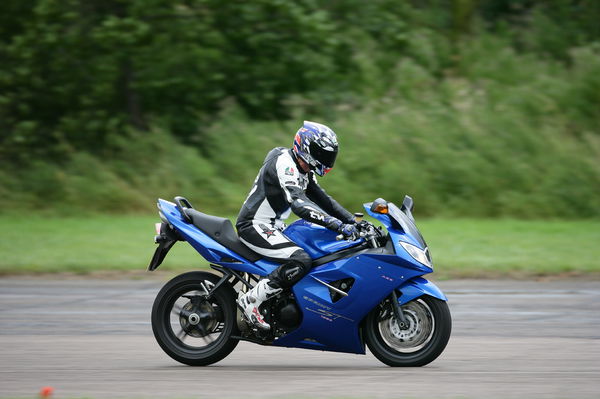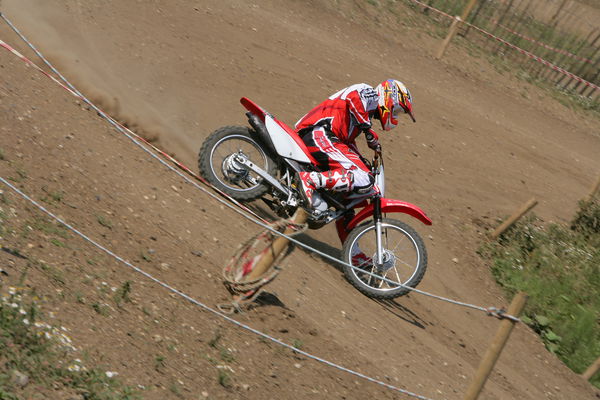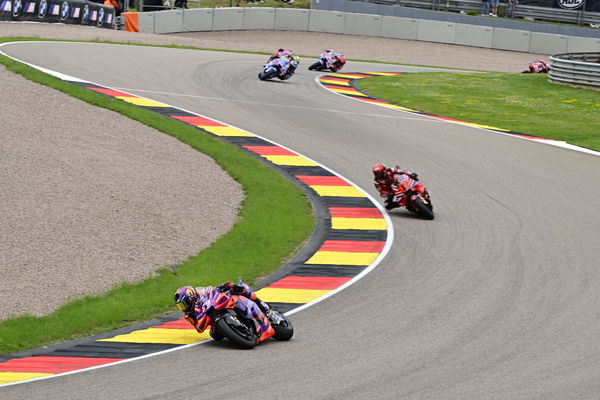Stop Right Now: ABS vs. The Man
ABS: good for those that wants it. Or is it even better than that? Can you handle the truth? Be prepared, as Prof Jon Urry and his performing lab rats demonstrate to us all the startling reality


Honda has stated that by 2010 most its bikes will have 'advanced braking systems'. Being a caring, responsible manufacturer Honda is doing its best to reach the best solution to cut bike accidents and deaths. But is ABS the way forward? Do we really need ultimate control of the brakes taken away from us?
Honda isn't alone. Most manufacturers are tinkering with ABS right now, and BMW have been at it for years. The problem with many bike ABS systems is that they aren't all that sophisticated. Bikes aren't like cars. If one of a car's wheels locks all the system needs do is momentarily reduce braking force, allowing the tyre to recover grip. Not a massive drama as a car has four large contact patches and reduced braking to one isn't going to affect the total braking force much. And car systems have been in development for years. The first car with ABS was a Jensen FF Interceptor launched in the late 1960s. Mass-produced bikes didn't have ABS until the BMW K series in 1988.
Crucially, bikes stop differently to cars. Most of a bike's braking force goes through the front tyre, so if the ABS reduces braking to prevent a skid, this has a very noticeable affect on the overall braking performance. Also bikes lean over. When a bike leans the tyre's rolling circumference changes, which confuses the sensors if the brakes are applied. The only real way to combat this would be to use gyroscopes, but then the costs and weight of the ABS system skyrockets. So bike manufacturers have to develop ABS that can deal with the unique circumstances of motorcycle braking.
So are the current systems actually any good? Not that long ago a decent rider could out-perform the ABS fitted to most bikes - the systems really were pretty crude. To see how things have moved on, we took two near-identical Triumph Sprint STs, one with ABS, one without, and put them to the test in damp-to-wet conditions. James Whitham acted as our experienced hand and TWO staffer John Hogan as the not so experienced one. A VBox GPS data recorder was also used to accurately measure speed, distance and time.
MAN V ABS
To give us some baseline figures Whit braked from an indicated 80mph (a genuine 75mph) to stationary on both bikes as hard as he could, first using both front and rear brakes, then only the front, only the rear and finally using engine braking alone.
Test 1: Both brakes combined, 75mph to 0mph
ABS 4.18SEC, 227 FEET
NON ABS 4.35SEC, 237 FEET
Using both brakes together James stopped faster with ABS than without, which was a surprise to us. How come, James?
"With the ABS the rear's making a big difference. When you're braking hard the ABS kicks in and reduces the braking force on the front, which pushes weight onto the back as the forks uncompress. I was holding both brakes hard so the back would then be working to stop the bike even harder for the time before the front recovered grip. It almost see-sawed back and forth as the ABS reduced then increased the braking. On the non-ABS bike I lost this extra bit of braking from the rear. I concentrated
on the front's grip while keeping pressure on the rear constant."
Test 2: Only using the front brake, 75mph to 0mph
ABS 4.75SEC, 265 FEET
NON ABS 4.6SEC, 258 FEET
With only one brake James beats the ABS. He tells us how... "Once I had the bike settled with some braking force I only had to concentrate on what the front tyre was doing. I can feel when the tyre is about to lock and release the brakes slightly. The thing with the non ABS bike was I could reach a constant, near the limit of traction, and keep it there. With the ABS you jam it on and when it thinks its going to lock it releases, then brakes again, releases, etc, which loses time. But I was impressed by the level of braking before it kicked in, and it took less concentration."
Test 3: Only using the rear brake, 75mph to 0mph
ABS 8.15 sec, 435 feet
NON ABS 7.8 sec, 409 feet
Once again James beats the ABS. Once again he tells us how: "It doesn't matter so much if the rear wheel locks. A five-metre front wheel skid is bad; with the rear it isn't. Using just the rear I simply braked until the tyre locked, then backed off a bit. I could be a bit rougher than with the front because I wasn't worried about locking, but I beat the rear ABS for the same reason as I did the front: constant braking rather than on/off ABS."
Test 4: Engine braking only
28.8 sec, 905 feet
James: "I never thought I'd bloody stop."











